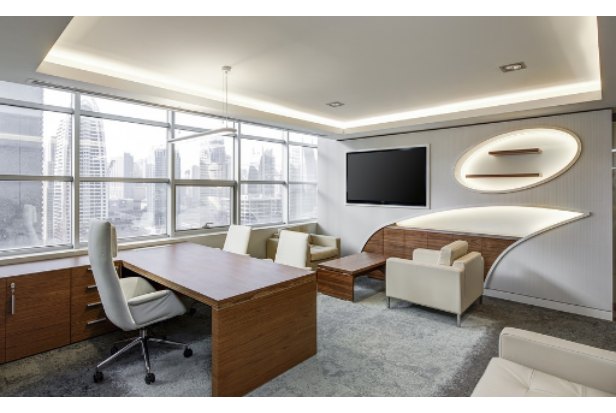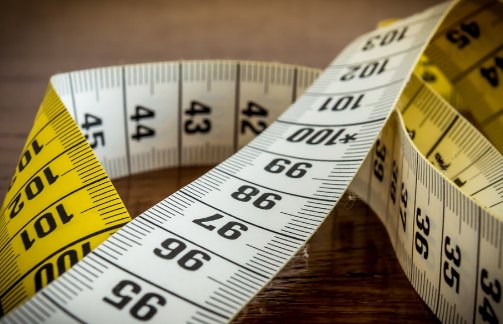
It’s crucial to purchase a desk that will perfectly fit your office space. If your desk won’t fit in your space, it doesn’t matter how beautiful it is.
What Does Width, Height and Depth Mean?
One of the biggest complaints we hear is that people mix up the width, height, and depth measurements.
According to industry practice, these dimensions should be shown width first, height second, and depth third.
For instance, 1600 x 730 x 600 can be displayed for our Price Point Beech Panel End Desk. This indicates that the office desk is 1600 mm wide (W), 730 mm high (H), and 600 mm deep (D).
When measuring furniture, make sure to do so facing the item, just as you would if you were going to use it.
- Width (W): The measurement from left to right (when facing the front of the piece of furniture)
- Height: (H): The measurement of the item from the floor (if freestanding) to the very top of the product
- Depth (D): The measurement of the item from front to back
Width
You’ll see that our product category pages allow you to narrow the page down by size. However, depending on the product type you are looking at will determine what size we mean.
For instance, office bookcases are filtered by height while office desks are filtered by the width of each desk. This is because the measurement for those specific products has the greatest range.
You can select the ideal office desk for your specific needs from a selection of office desks that range in width from 800 to 2000 mm with us.
Height
A product’s height is calculated from the bottom (if freestanding) to the very top. The majority of our office desks are 730mm tall as a standard because it pairs well with related items like pedestals and office chairs.
Because the height option has the most variations, our bookcases product category has been narrowed down by height.
Depth
The depth is determined by measuring it from front to back while standing in the position you would take to use the product. In order to maintain consistency among all of our products, many of our offerings are industry standards.
For instance, all of our office desks and pedestals are designed with a depth that prevents any pedestal from being deeper than the desk itself.
What to Consider When Choosing a Standing Desk
1. the Space Available
The space you have at your disposal must be taken into account first. Your ability to get creative with your office desk size depends on how big your workspace or home is. Your overall potential desk size may be influenced by your available space or by a corner wall. You must learn how to measure the office desk size requirements for your available space in order to buy the appropriate office desk.
2. Your Budget
Your choice of desk size is significantly influenced by your budget. The ideal balance between your budget and your size requirements must be found. For your daily work tasks, a medium-sized desk might suffice rather than an extra-large one. Instead of purchasing two separate desks to fit, it might be more economical for you to divide one large desk into two workspaces.

3. Your Height and Build
Not everyone will be able to use standard desk sizes. Given that average sizes typically accommodate people with more common builds and heights in a population, there is no one size that fits all when it comes to desk sizes. Always experiment with different dimensions to see what works best for you.
4. Ergonomic and Health Considerations
By designing an ergonomic workspace, you lower your risk of back pain and other injuries brought on by poor sitting techniques. The right desk size can help you maintain the proper posture, correct eye position, shoulders, and hands—likewise, factor in the appropriate keyboard, desktop, and computer positioning for a healthier office work posture.
You may also consider more flexible ergonomic office desk designs such as standing desks that have an adjustable height allowing you to have a more active and healthier work experience as well as reducing the risk of developing lower back pain.
5. the Type of Equipment
A standard desk width and depth is usually sufficient for regular desk work and a few desk accessories. However, the type of work you do and the equipment you need to do it determine how much extra top desk space you need. You don’t need a lot of top desk space if you only need the basic office supplies and equipment on your desk.
To increase the top surface area of the desk, the desk width is typically adjusted the most. You might require a standalone workstation that includes a desktop computer, monitor, printer, scanner, document trays, and recording tools. You will need a larger desk surface if you need to use more tools and perform more tasks.
How Deep Should My Office Desk Be?
Many people do not think deeply because there are typically fewer options available. Office desk depth is typically either 600mm or 800mm.
Both of these dimensions have room for a storage pedestal underneath. Home office desks come in a wide range of sizes and shapes, and the depth varies considerably between different models. Check the depth before making a purchase.
All of the necessities for a typical office setting can fit on an 800mm depth desk. If you want more room for your legs, an 800mm depth desk may be better than a 600mm depth desk because some office desks come with a back panel attached.
How High Should My Office Desk Be?
The majority of our office desks have a height that falls between 725mm and 730mm. This is the industry standard and works with almost every office chair and person of every size.
Purchase a height-adjustable gas strut ergonomic office chair as soon as possible. This gives you the option to adjust your office chair height to match both your own height and the height of your desk for maximum comfort.
Consider a standing desk that can also be used in a seated position, giving you the freedom to choose how you want to work.
Questions to Consider before Buying Office Furniture
It’s time to think about some questions before buying office furniture now that you have a better understanding of its measurements.
- Space available – Where exactly is your desk going to be placed? Does the available space take into consideration the desk’s width and depth?
- How the desk will be used – Will the desk be used continuously or intermittently?
- What equipment will be used – Numerous individuals use a variety of devices on their desks, including monitors, keyboards, printers, lamps, etc.
- Your office chair – What type of chair are you going to use with the desk? Complementing the desk, is the chair? When not in use, can the chair be tucked under the desk?
- The type of material – Do you have any other pieces of furniture that the desk should match? Office furniture that is a mishmash presents a very unprofessional image.
- The shape of the desk – Will the desk be placed next to another desk or in the corner of the room? Could a desk with a wave design enhance your working style?
- Budget – Elegant but pricey grand desks are appealing. Before making a final decision, take into account every piece of furniture, including the pedestal, office chair, desk, and chair.
